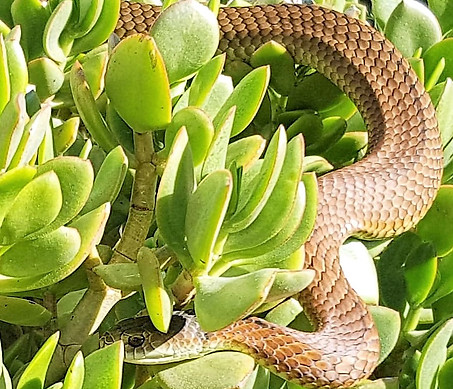
THE SNAKE HUNTER IS YOUR 24/7 SNAKE CATCHER MELBOURNE
Fully Insured
We are fully insured so you know that you and your family are protected.
Reliable & Well Known
The Snake Hunter is the best known Snake Catcher in Melbourne with the best reputation for having the fastest response times, being reliable and professional.
Best Snake Catcher in Melbourne
For the best snake catcher in Melbourne:
THE SNAKE HUNTER
24/7 SNAKE CATCHER
Ph: 0403 875 409
Lowland Copperhead Snake
(Austrelaps superbus)

INTRODUCTION
There are three types of copperhead snakes in Australia. The one you should commonly find in Melbourne and surrounding areas is the Lowland Copperhead snake. This snake is not typically known compared to other snakes such as the tiger or eastern brown, however in my experience appears just as often in people’s homes and backyards. The lowland copperhead is NOT closely related to the American copperhead which is an entirely different species of snake.


DESCRIPTION
This snake highly variable in colour ranging from light grey, reddish, brown and black.
1. Adults which are black coloured often have a prominent orange/red streak running along the side of the body which causes many to mistake them for red bellied black snakes.
2. I have found these snakes to have multiple colours mixing red, black, orange, copper such as in the picture above.
3. Occassionally, they can be a uniform colour as well.
4. The copperhead is usually 1-1.5 metres long. Females tend to be up to 1 metre long and males generally grow up to 1.5 metres long.
5. They are often a thick bodied snake with a copper coloured head that is distinct in colour from the rest of the body.


BEHAVIOUR
Lowland copperheads are typically initially docile and very shy with humans in the wild. Generally these snakes will retire and retreat if disturbed, however if threatened, they can assume menacing positions puffing up their body to appear bigger.
Once scared they often repeatedly change position with great speed ready to strike out. If handled, lowland copperheads personality can change significantly from their initial shyness. They can repeatedly strike at the person holding them. These are very fast snakes when they bite.
Lowland copperheads are a very interesting snake. They often appear in garages, in and around the home, near garden beds that are frequently watered and/or hiding under objects.


FOOD & REPRODUCTION
Lowland copperheads feed on small vertebrates such as frogs, lizards, and occasionally small mammals. They will eat smaller snakes and are cannibalistic. If I were to put two copperheads together for mating purposes, I need to be careful the larger snake does not try to eat the smaller one.
Females can give birth to live young (they are ovoviviparous), producing an average of 15 neonates per birth. This usually occurs in mid to late summer.


DISTRIBUTION AND HABITAT
These snakes are found near damp habitats such as streams or swampy areas. The lowland copperhead is found almost all over southern Victoria and has a preference for places near water including around ponds, dams, canals, drainage ditches and along the sides of roads. Copperheads have adapted to living in cold temperature climates. These snakes can be active in weather considered to be too cold for other snakes.
In and around Melbourne, I mostly come across these snakes in Eltham, Kinglake, Doreen, St Andrews, Warrandyte and Research particularly if there is a swimming pool or pond in the person’s back yard.


